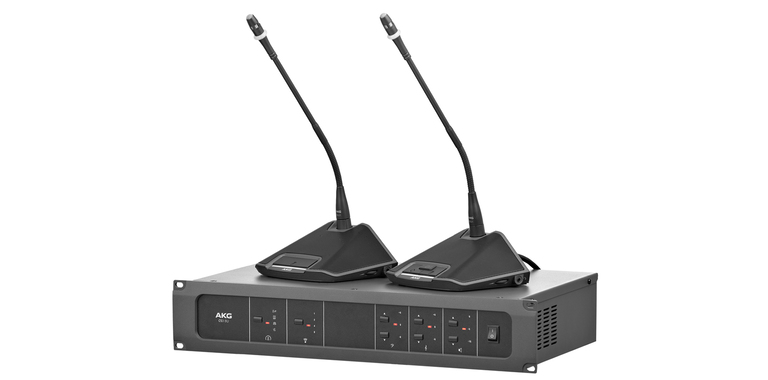
The problem that arises here is that when everyone is socially distanced communications can become strained. Whether through plastic screens or via physical distance it’s just difficult having a conversation at a distance. However, HARMAN have an easy to setup and use solution that could work well in this exact situation in their AKG CS3 conference system which is what we will be talking about in todays blog.

The CS3 System is a modular and flexible conference system suitable for any venue — from corporate boardrooms to courtrooms to council chambers — and its components can be easily set up and scaled to fit any project. For instance, one CS3 base unit can support 60 microphones which connect to all relevant devices like PA, recording equipment, external audio sources and camera control systems. The CS3 microphone station comes with a robust interface connector, which makes it easy to swap out the mics, which come in two detachable versions and offer superior AKG sound quality. The CS3 combines simple setup and use with rugged design that fits in to any venue.

The CS3 BU is the base unit for the CS3 conference system and provides all the necessary inputs and outputs to manage a conference for up to 60 microphone stations. It is the interface to all audio devices in a meeting room and offers a RS232 interface to connect an optional camera control system. On the Base Unit you can select one of four conference modes:
The NOM button sets the number of mics allowed to be active simultaneously (1,2,4,6 delegates). The final 3 buttons control the bass, treble and master volume.
The CS3 CU (Chairman Unit) is a microphone station with two operating modes. In priority call mode, the user can manually mute all connected delegate stations. In next in line mode the CS3 CU automatically activates the next delegate station in the waiting list.
The CS3 DU (Delegate Unit) microphone station is the basic delegate unit for the CS3 conference systems. Depending on the selected operating mode, the Push To Talk key enables the speaker to directly switch on their microphone or to enter the system waiting list.
Both stations provide a built-in speaker and 2 x 3.5 mm stereo jacks to connect headphones for up to two delegates. The detachable microphone comes in two choices - the CS321 cardioid condenser capsule on a 30 cm long gooseneck and the 50 cm long CS521.

The versatility of the CS3 system is rooted in the various operation modes.
If the number of active microphones is at the chosen maximum, the earliest activated microphone will be muted when the additional microphone is activated by pressing the Speak Button on one of the Delegate Units. Another way of describing the Override mode is “first in, first out” and is useful if delegates forget to turn off their microphones.
The CS3 DU microphones which are over the maximum selected number will automatically be added to a queue. The Chairman Unit can then activate the next in line from their microphone station.
This allows up to 20 CS3 DU microphones to be activated simultaneously. This is not limited by the maximum number of active microphones selected in the NOM setting on the CS3 BU. When the maximum number of 20 active Delegate Units is reached, pressing the talk button on the additional unit will not activate the microphone.
If the chairman can press the Approve Button on their microphone base unit to approve the speaking request from the Delegate Unit. The maximum number is limited by the NOM setting and any additional mics over the limit cannot request to speak.

On the Back of the CS3 BU there are XLR as well as line inputs for connecting source audio or an external call (in conference applications) and XLR and line outputs for connecting to a PA system or back into that call.
There are two RS232 ports, a Central Control connection for external video tracing and a PC Connector to allow connection to a computer running the CS3 ConferenceControl software. ConferenceControl is optional and allows for conference management such as creating a list of delegates, a seating plan, an agenda and allows for voting to take place using the microphone base units.


This outlines what the unit can do, but how does it apply to our current ‘situation’? Well lets look at an example scenario. In it’s simplest form you could have a box with two mics, set to a 1 delegate (NOM) maximum. This would essentially work as an intercom, with each user being able to push to talk and correct mic routing/outputs preventing feedback from the speakers.
Obviously this isn’t using the unit to it’s fullest and as such likely isn’t that cost effective… but take the idea and scale it up and there are many many scenarios that this system could help with in the “new normal” of 2021. A large meeting room (with socially distanced delegates), a system spread over multiple rooms…